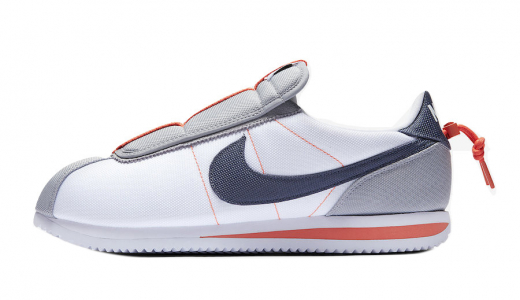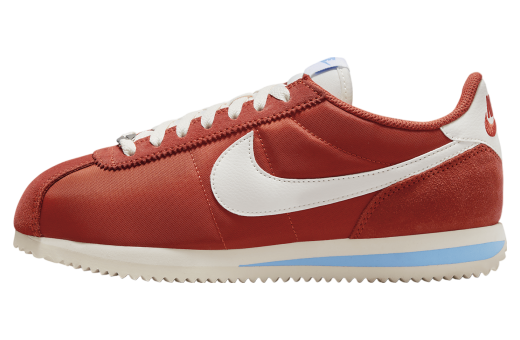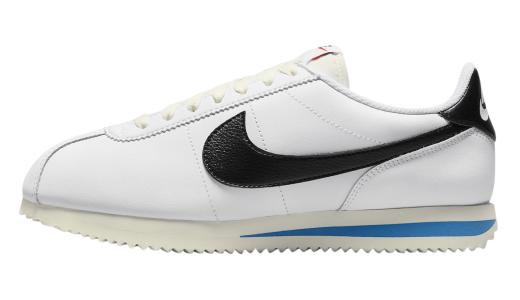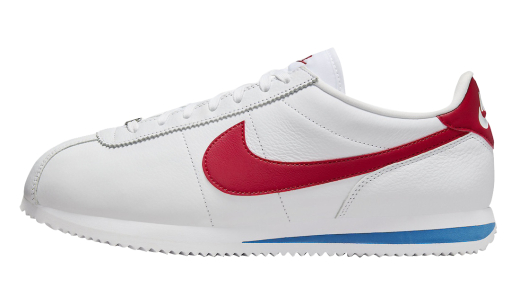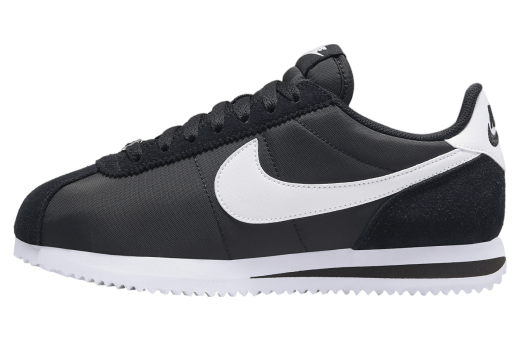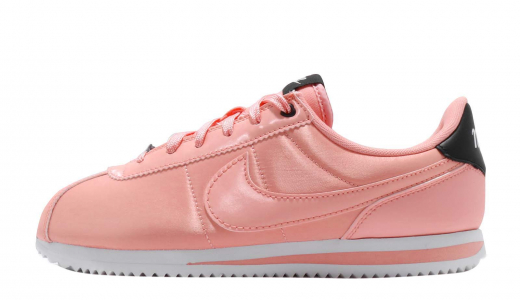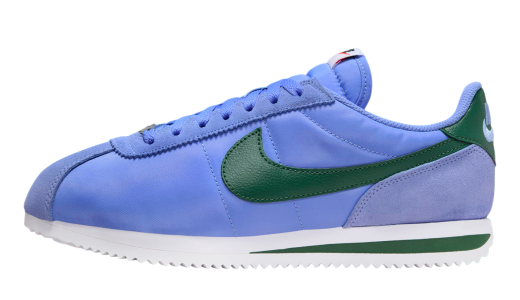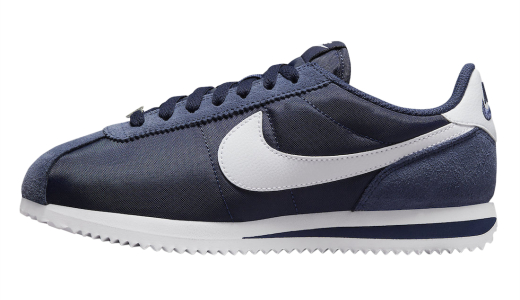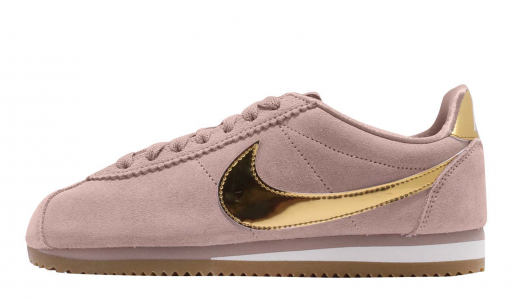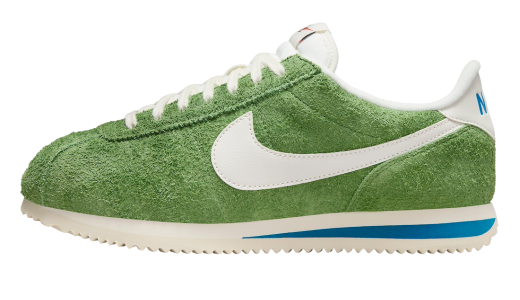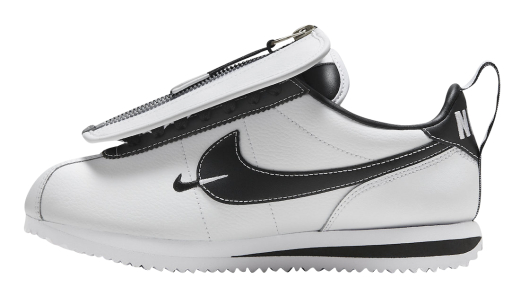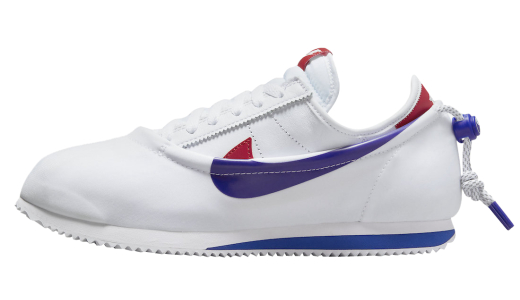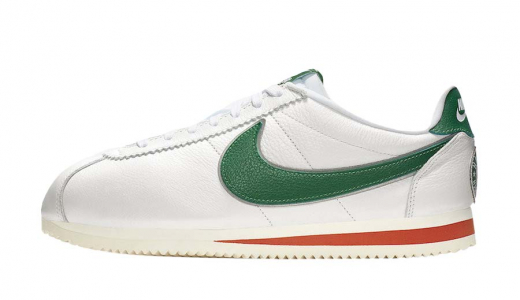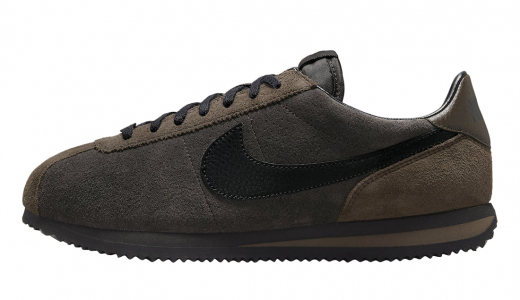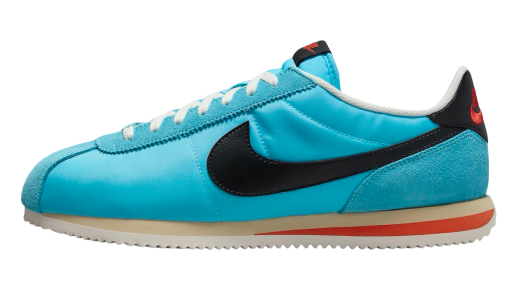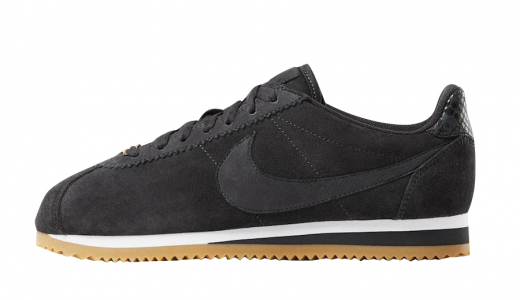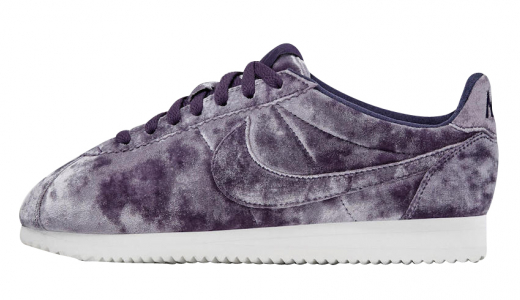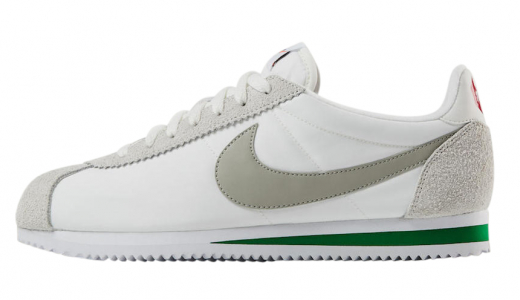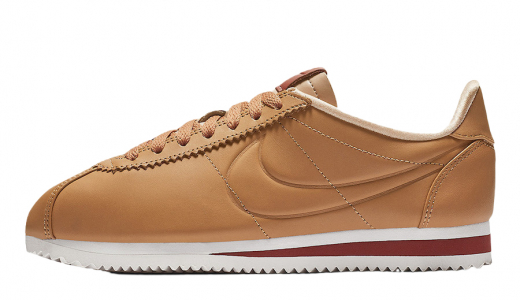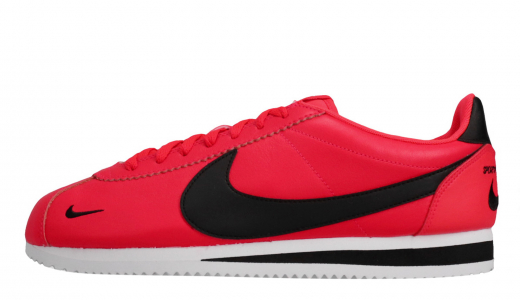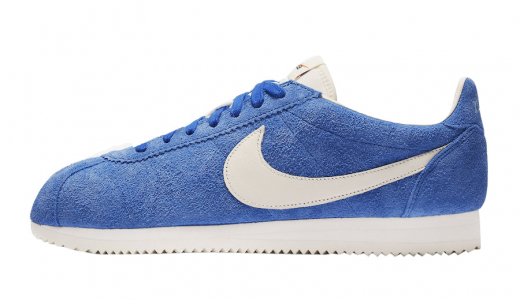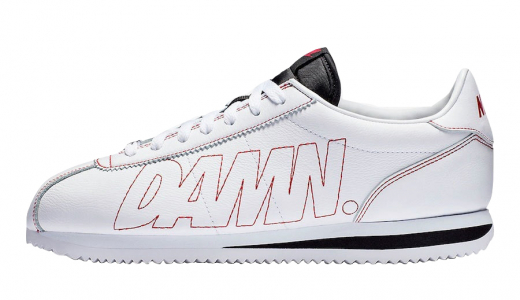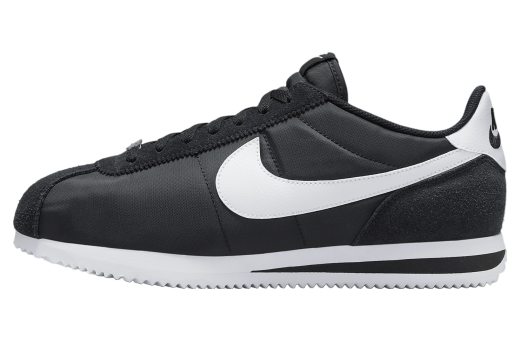Nike Cortez
The Nike Cortez is an iconic sneaker that has carved out a significant place in both athletic and pop culture history since its debut in 1972. Designed by Nike co-founder Bill Bowerman, the Cortez was originally created to provide athletes with a lightweight and durable running shoe. Featuring a leather upper, a thick rubber sole, and a distinctive herringbone pattern for enhanced grip, the Cortez quickly became popular among runners for its comfort and efficiency. Beyond its technical merits, the shoe's sleek silhouette and bold design elements made it an instant hit off the track as well. Over the years, the Cortez has been released in various materials and colorways, maintaining its status as a timeless piece of footwear.
Beyond its athletic roots, the Nike Cortez has made significant inroads into fashion and street culture, frequently appearing in movies, music videos, and on the feet of celebrities. The shoe gained tremendous mainstream visibility after being featured in the 1994 film "Forrest Gump," where it served as Forrest's shoe of choice during his cross-country run, symbolizing the theme of perseverance. It has also been embraced by various subcultures, particularly within the hip-hop and skateboarding communities, solidifying its versatile appeal. Today, the Nike Cortez continues to be celebrated for its retro aesthetic and comfortable design, embodying a blend of sport and style that transcends generations.
History of Nike Cortez
The Nike Cortez is much more than a sneaker; it is an enduring cultural icon that spans decades and transcends geographic boundaries. From its inception in the 1970s to its prominent role in hip-hop culture and Hollywood films, the Nike Cortez is a story of innovation, perseverance, and style. This historical account will delve into key developments and milestones that have cemented the Cortez's status as a legendary shoe.
Origins and Birth (1960s-1970s)
The genesis of the Nike Cortez begins in the early 1960s, tied intrinsically to the history of its creators, Bill Bowerman and Phil Knight. In 1964, Bowerman, a track and field coach at the University of Oregon, and Knight, a middle-distance runner who had been coached by Bowerman, founded Blue Ribbon Sports (BRS). The company initially functioned as a distributor for the Japanese brand Onitsuka Tiger (now known as ASICS) and sold running shoes in the United States.
Bowerman's innovative mindset led him to design shoes that would enhance athletic performance. This vision materialized into the creation of the Tiger Cortez, which was the precursor to the Nike Cortez. Unveiled during the 1968 Olympics in Mexico City, the Tiger Cortez was celebrated for its comfort, support, and durability — three attributes that were revolutionary for running shoes at the time.
The Split and Rebranding (1971-1972)
In the early 1970s, BRS's relationship with Onitsuka Tiger began to fray. Legal disputes ensued over the Cortez design, prompting Bowerman and Knight to sever ties with the Japanese company. This separation cleared the path for BRS to venture out on its own. It was during this crucial period that the brand underwent a transformation, adopting the now-iconic name Nike, inspired by the Greek goddess of victory.
In 1972, Bowerman and Knight introduced the Nike Cortez under the newly formed Nike brand. This new iteration maintained the pioneering design elements of the original Tiger Cortez while incorporating small tweaks for better performance and style. The shoe's unique combination of a cushioned EVA midsole, durable rubber outsole with herringbone pattern, and lightweight nylon upper made it a favorite among running enthusiasts.
Popularity in Sports and Beyond (1970s-1980s)
The Nike Cortez's prominence in the athletics world rapidly grew throughout the 1970s. Athletes admired the shoe for its groundbreaking design, which provided superior arch support and shock absorption. This admiration was not limited to professional runners; casual joggers and fitness aficionados also gravitated towards the Cortez. It wasn't long before the shoe's appeal spread beyond sports and infiltrated mainstream American culture.
By the late 1970s and early 1980s, the Cortez became a symbol of urban street culture, especially in cities like Los Angeles. Its sleek design and availability in a variety of colorways turned it into an appealing fashion statement. Concurrently, the burgeoning hip-hop scene adopted the Cortez, cementing its cultural significance. The White/Varsity Red/Varsity Royal colorway, in particular, became an iconic look, featuring prominently on streets and in music videos.
Hollywood and Global Recognition (1980s-1990s)
The Nike Cortez received a significant cultural boost in 1994 when it was prominently featured in the film "Forrest Gump." Tom Hanks, playing the titular character, dons a pair of Nike Cortez sneakers during his coast-to-coast running scenes. This exposure spurred a resurgence in the shoe's popularity, introducing it to a whole new generation of consumers. The integration of the Cortez into such a culturally impactful film illustrated its versatility as both an athletic shoe and a casual fashion staple.
As the 1990s progressed, the Cortez continued to enjoy widespread acclaim. The shoe's minimalist design allowed it to transcend borders and resonate globally. It became particularly popular in regions such as Latin America and East Asia. Nike capitalized on this international appeal by launching various marketing campaigns focused on the universal nature of the Cortez, reinforcing it as a symbol of resilience and effortless style.
The Cortez in Street Culture and Music (2000s-Present)
The dawn of the 21st century saw the Nike Cortez maintaining its relevance amid changing fashion trends. The shoe garnered substantial support within the burgeoning West Coast rap and hip-hop scenes. Influential artists and groups, particularly in California, often sported the Cortez, reinforcing its status as an emblem of urban culture.
This phenomenon was not confined to the United States. Globally, the Cortez became synonymous with streetwear and subcultural fashion. Its versatile design meant that it could be worn with a wide range of styles, from casual outfits to more curated looks. Nike played an active role in reinforcing the Cortez's association with street culture. Several collaborations with designers, musicians, and artists led to limited-edition releases that further entrenched the Cortez's iconic status.
One notable collaboration was with rapper Kendrick Lamar. His collaboration celebrated not only the shoe's legacy but also its cultural significance, especially within the African American community. These initiatives, alongside re-releases of vintage models and colorways, ensured that the Cortez remained relevant amid evolving fashion sensibilities.
Technological Advancements and Environmental Initiatives
In addition to its cultural significance, the Nike Cortez has consistently benefited from advancements in shoe technology. Nike's commitment to innovation led to the development of newer materials and construction techniques that have enhanced the shoe's athletic performance. The Cortez models have seen upgrades such as breathable mesh uppers, improved midsole cushioning, and environmentally friendly materials.
Nike's Move to Zero initiative, which aims to achieve zero carbon and zero waste, has also impacted Cortez production. The utilization of recycled materials in Cortez manufacturing aligns with growing consumer demand for sustainable products. This forward-thinking approach safeguards the shoe’s future, ensuring it remains a viable option for environmentally conscious consumers.
Enduring Legacy and Future Prospects
As the Nike Cortez approaches its sixth decade, its legacy is firmly established. It stands as a testament to the confluence of athletic innovation and cultural expression. The Cortez's journey from a revolutionary running shoe to a symbol of street culture and Hollywood glamour underscores its adaptability and timeless appeal.
Nike's strategic marketing and consistent product innovation have ensured the Cortez's relevance across multiple generations. The shoe's ability to traverse different cultural landscapes and maintain its status as a fashion staple speaks volumes about its design’s intrinsic value. Whether as a functional running shoe or a streetwear essential, the Cortez continues to embody a spirit of perseverance and style.
Conclusion
The Nike Cortez is a dynamic piece of footwear history, encapsulating both the progress of athletic technology and the evolution of cultural trends. From its early days as a pioneering running shoe under the aegis of Blue Ribbon Sports to its current standing as a global icon, the Cortez has never lost its allure. It represents the intersection of sports, fashion, and history, capturing the essence of each in its unassuming yet powerful silhouette. This historical overview showcases that the Cortez is not merely a shoe but a multifaceted symbol of cultural resilience and evolution.
